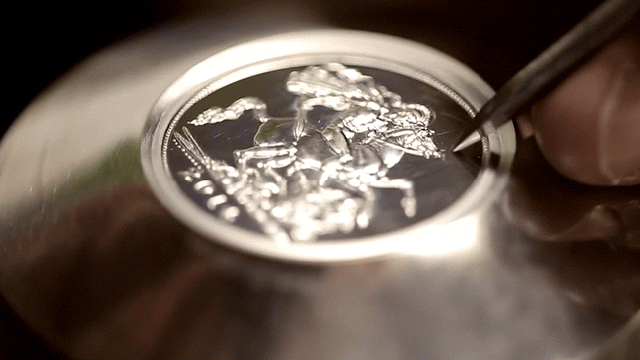Video: The British Royal Mint makes three types of commemorative coins: bullion, brilliant uncirculated and proof. Bullion is basically made to the same standard of regular coins in circulation, brilliant uncirculated coins (a real mouthful) are finished with more attention to detail than bullion coins and proof coins are of the absolute highest quality and care.
The dies used to strike Proof coins are all hand-finished. This is to ensure that all imperfections are removed before they’re used to strike a coin. Each Proof blank is placed into a coin press by hand. Proof blanks are of a higher quality than Brilliant Uncirculated and Bullion blanks. Proof coins will be struck up to six times, at a lower speed and with less pressure than other finishes. This ensures a smoother, sharper finish and preserves the finer details of the design.
After striking, each Proof coin is removed from the press by hand and checked for imperfections. The dies are cleaned with air between each coin to ensure that no marks or imperfections are caused during striking. As a result of the extra care and attention, no more than 50 Proof coins can be struck per hour. Whereas, for example, Bullion coins are produced at a rate of around 3,000 coins per hour. The Proof dies are regularly re-worked and re-polished to maintain a blemish-free finish when striking. Each Proof die may only strike a few hundred coins before it has to be re-polished.
